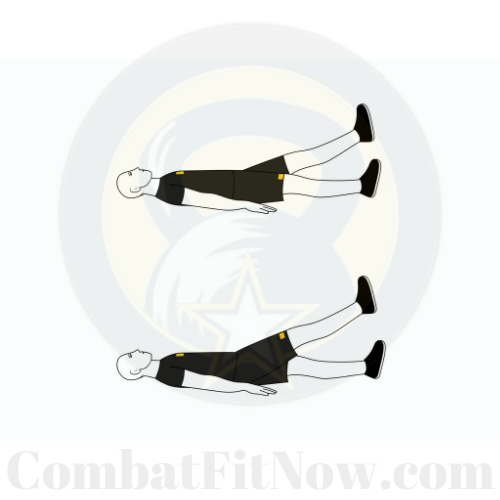Flutter kicks are a core exercise that primarily target the lower abdominal muscles. Here’s a step-by-step guide on how to perform flutter kicks with proper form:
Video Instructions On How To Do Flutter Kicks
Muscles Targeted:
- Lower abdominal muscles (Rectus Abdominis)
- Hip flexors
Instructions:
- Starting Position:
- Lie flat on your back on a mat or a stable surface. Keep your legs fully extended and your arms at your sides, palms facing down.
- Engage your core muscles by drawing your navel toward your spine.
- Head and Neck Position:
- Keep your head and neck relaxed on the ground, and maintain a neutral spine. Avoid lifting or straining your neck during the exercise.
- Leg Movement:
- Lift your legs a few inches off the ground. Ensure that your lower back stays pressed into the mat.
- Start the fluttering motion by alternately kicking your legs up and down in a controlled and rhythmic manner. The movement should resemble a fluttering motion, similar to swimming kicks.
- Controlled Breathing:
- Breathe in a controlled and steady manner throughout the exercise. Exhale as your legs move down, and inhale as they move up.
- Maintain Form:
- Focus on keeping your legs straight and your movements controlled. Avoid bending your knees excessively, and don’t let your feet touch the ground.
- Duration:
- Flutter kicks can be done for a specific duration (e.g., 30 seconds to 1 minute) or for a certain number of repetitions. Beginners may start with shorter durations and gradually increase as they build strength.
- Modification:
- If you find it challenging to keep your legs straight, you can slightly bend your knees. As you progress, work towards straightening your legs.
- Rest and Sets:
- Include flutter kicks in your core workout routine. You can perform multiple sets with short rest intervals or incorporate them into a circuit training routine.
- Common Mistakes to Avoid:
- Avoid arching your lower back; keep it pressed into the mat.
- Don’t lift your head and neck off the ground.
- Maintain a controlled and steady fluttering motion; avoid rapid or jerky movements.
Remember, it’s essential to listen to your body and start with a level of difficulty that suits your fitness level. As you become more comfortable with flutter kicks, you can gradually increase the intensity and duration. If you have any existing medical conditions or concerns, it’s advisable to consult with a fitness professional or healthcare provider before starting a new exercise routine.



